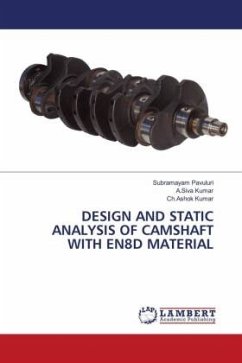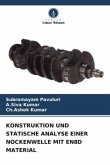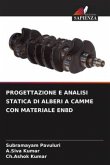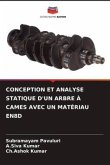This book explores material modification's efficiency. Camshafts manage the injection of vaporised fuel in internal combustion engines. The main purpose of the camshafts to maintain the time to time intervals in combustion engine fuel injections. Multiple cams on camshafts open valves directly or using pushrods. A camshaft directly connected to the crankshaft times valve openings. Camshafts may be manufactured of several materials. Camshaft materials vary on engine grade and type. Mass-produced cars employ chilled cast iron. Child cast iron is sturdy and affordable. Cold treatment strengthens and hardens metals. This book is a model of 150CC cam shaft in CATIA, In this effort, steel and aluminum alloy will replace camshafts. Cast iron, steel, and aluminum alloy cam shafts will be structurally and model-analyzed. Three camshaft materials will be compared to determined and incorporated best materials.
Bitte wählen Sie Ihr Anliegen aus.
Rechnungen
Retourenschein anfordern
Bestellstatus
Storno








